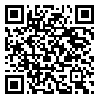Ahvaz Jundishapur University of Medical Sciences , shakurnia@yahoo.com
Abstract: (3354 Views)
Introduction: The distractors have a very important role in Multiple-Choice Question (MCQ) and it can influence the quality of the tests. This study aimed to investigate frequency of functioning and non-functioning distractors and the relationship between the distractors options with difficulty and discrimination in Ahvaz Jundishapur University of Medical sciences in 2017.
Methods: In this descriptive-analytic study, the distractors of the MCQs in the immunology were examined. The distractors were those that selected by more than 5% of the examinees', they were considered as Functioning Distractors (FDs) and by less than 5% of the examinees' were considered as non-functioning distractors (NFDs). Data were analyzed using Analysis of Variances and Pearson correlation coefficient; for all tests error was considered as 5%.
Results: Out of 2124 distractors, 1361 (64.08%) were FDs and 763 (35.92%) were NFDs. The frequency of MCQs with 0, 1, 2 and 3 FDs was 12.4%, 19.5%, 31.5% and 36.6%, respectively. There was a significant negative correlation between the number of FDs and the difficulty index (r=0.442, p=0.000), but there was not a significant correlation between the number of FDs and the discriminative index of MCQs (r=0.043, p=0.259).
Conclusion: The findings showed that more than one-thirds of the distractors were NFDs. As a result of increasing the number of NFDs, the difficulty and the discriminative indices of questions decreased and led to a drop in the quality of the test. Item analysis results could be used to identify and remove non-functioning distractors from MCQs that have been used to improve the quality exam.
Methods: In this descriptive-analytic study, the distractors of the MCQs in the immunology were examined. The distractors were those that selected by more than 5% of the examinees', they were considered as Functioning Distractors (FDs) and by less than 5% of the examinees' were considered as non-functioning distractors (NFDs). Data were analyzed using Analysis of Variances and Pearson correlation coefficient; for all tests error was considered as 5%.
Results: Out of 2124 distractors, 1361 (64.08%) were FDs and 763 (35.92%) were NFDs. The frequency of MCQs with 0, 1, 2 and 3 FDs was 12.4%, 19.5%, 31.5% and 36.6%, respectively. There was a significant negative correlation between the number of FDs and the difficulty index (r=0.442, p=0.000), but there was not a significant correlation between the number of FDs and the discriminative index of MCQs (r=0.043, p=0.259).
Conclusion: The findings showed that more than one-thirds of the distractors were NFDs. As a result of increasing the number of NFDs, the difficulty and the discriminative indices of questions decreased and led to a drop in the quality of the test. Item analysis results could be used to identify and remove non-functioning distractors from MCQs that have been used to improve the quality exam.
Keywords: Student Assessment, multiple-choice questions, distractors, functioning distractors, non-functioning distractors, difficulty index, discriminative index
Type of Study: Original research article |
Subject:
Educational Management
Received: 2018/09/2 | Accepted: 2019/05/14 | Published: 2019/04/15 | ePublished: 2019/04/15
Received: 2018/09/2 | Accepted: 2019/05/14 | Published: 2019/04/15 | ePublished: 2019/04/15
| Rights and permissions | |
 |
This work is licensed under a Creative Commons Attribution-NonCommercial 4.0 International License. |



